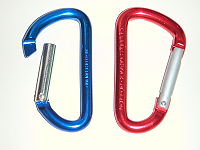
Photo from wikipedia
Abstract Rechargeable alkali metal anodes hold the promise to significantly increase the energy density of current battery technologies. But they are plagued by dendritic growths and solid‐electrolyte interphase (SEI) layers… Click to show full abstract
Abstract Rechargeable alkali metal anodes hold the promise to significantly increase the energy density of current battery technologies. But they are plagued by dendritic growths and solid‐electrolyte interphase (SEI) layers that undermine the battery safety and cycle life. Here, a non‐porous ingot‐type sodium (Na) metal growth with self‐modulated shiny‐smooth interfaces is reported for the first time. The Na metal anode can be cycled reversibly, without forming whiskers, mosses, gas bubbles, or disconnected metal particles that are usually observed in other studies. The ideal interfacial stability confirmed in the microcapillary cells is the key to enable anode‐free Na metal full cells with a capacity retention rate of 99.93% per cycle, superior to available anode‐free Na and Li batteries using liquid electrolytes. Contradictory to the common beliefs established around alkali metal anodes, there is no repeated SEI formation on or within the sodium anode, supported by the X‐ray photoelectron spectroscopy elemental depth profile analyses, electrochemical impedance spectroscopy diagnosis, and microscopic imaging.
Journal Title: Advanced Science
Year Published: 2021
Link to full text (if available)
Share on Social Media: Sign Up to like & get
recommendations!